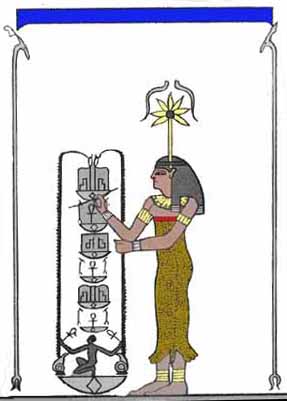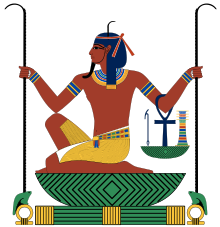July 5th, 2012 my family and I went to see the new Spiderman movie while visiting NJ. In one of the early scenes at OSCORP there was a tour given by a lady who explained that the company had their own Tree of Life connecting all of their divisions. I thought that was interesting since I have been seeing Seshat's symbols in movies lately. This movie having as one of its most important actions "transmutation": the ability of a human body to obtain supernatural powers and change at will. This movie also uses the "honeycomb" symbol I wrote about in my early blogs regarding Seshat and early Egypt, the "Poetic Honey Mead" and the significance of this symbol in ancient KMT.
From my journal notes:
The movie was a lot like secret societies beliefs and what they hold onto of Egypt. The central theme was that of keeping a secret. When Spiderman let out the formula all hell broke loose and he had to fix the damage. If he had kept it to himself it would not have been used for bad. There is that assumption that (myster or mathmematics) will be used wrongly if put in the wrong hangs- as the central vice of the movie. Moreover, that not everyone is to have that knowledge because it solves unknowns, it touches on divinity, and enables manifestation, creation, or innovation. New tools for usage.
This comic is associated with The Brotherhood of the SHIELD. Shields conseal to protect. This "Brotherhood" is said to be from Egypt, according to the historical story line. What is also of note is that the owner of OSCORP, Norman, comes from an Egyptian sarcophacus. There is no doubt to me that the symbolism is intentional. But why are they using African symbols and history in their story telling. To me it is the continueation of a culture of those interested in science, mathematics, astronomy, and so consistently Egypt. So many great, well known "stars" in the scientific realm wrote more books about Egypt's sciences and script than about the math and sciences they were popular in history for, including Sir Isaac Newton and Tesla.
From my half sleep ramblings of connections between the movie and Seshat:
Green reptilian
Blue antegen
Top
Animism atributes
Half human, half animal
Egyptian science of animals godlike features with humans
O S C O R P...Scorpio, osiris,
Mary mother, auntie M, OS like Oz in wizard of OZ. Top of building in large city. Peter lives in Queens, Oscorp is in Manhattan.
Dinner with whole fish per speroson branzino
Tree of life in the movie had a Rnorman osborne in tree, from egyptian sarcophagus.hino and Scorpioan
Brotherhood of the SHIELD
Secret Society from Egypt
Newton, Tesla, Michaelangelo, Da Vinci
divisions are Psi, Black ops, Eye, Strike
From my online search:
"S.H.I.E.L.D. is 2010 comic book ongoing series published by Marvel Comics, premiering with a first issue cover dated June 2010. It details the secret history of the occult organization the Shield. The series is written by Jonathan Hickman and drawn by Dustin Weaver.[22][23][24]
Flashbacks reveal that the Shield was founded by Imhotep following a battle (alongside Apocalypse and the original Moon Knight) against the Brood, and that previous agents include Zhang Heng (who tricked a Celestial into using the sun to give birth to its child instead of destroying the Earth or the Moon to do so), Galileo Galilei (who fought against Galactus) and Leonardo Da Vinci (who is shown with a mysterious device, flying off in an ornithopter).[volume & issue needed]" from wiki
It seems there is a difinate relationship among the science of the ancient Egyptians and the comics, hollywood, and entertainment industry. They are using the symbols and stories of the ancient Egyptians. This does not, however, mean that their stories are of the ancient thought (Thoth).
From my journal notes:
The movie was a lot like secret societies beliefs and what they hold onto of Egypt. The central theme was that of keeping a secret. When Spiderman let out the formula all hell broke loose and he had to fix the damage. If he had kept it to himself it would not have been used for bad. There is that assumption that (myster or mathmematics) will be used wrongly if put in the wrong hangs- as the central vice of the movie. Moreover, that not everyone is to have that knowledge because it solves unknowns, it touches on divinity, and enables manifestation, creation, or innovation. New tools for usage.
This comic is associated with The Brotherhood of the SHIELD. Shields conseal to protect. This "Brotherhood" is said to be from Egypt, according to the historical story line. What is also of note is that the owner of OSCORP, Norman, comes from an Egyptian sarcophacus. There is no doubt to me that the symbolism is intentional. But why are they using African symbols and history in their story telling. To me it is the continueation of a culture of those interested in science, mathematics, astronomy, and so consistently Egypt. So many great, well known "stars" in the scientific realm wrote more books about Egypt's sciences and script than about the math and sciences they were popular in history for, including Sir Isaac Newton and Tesla.
From my half sleep ramblings of connections between the movie and Seshat:
Green reptilian
Blue antegen
Top
Animism atributes
Half human, half animal
Egyptian science of animals godlike features with humans
O S C O R P...Scorpio, osiris,
Mary mother, auntie M, OS like Oz in wizard of OZ. Top of building in large city. Peter lives in Queens, Oscorp is in Manhattan.
Dinner with whole fish per speroson branzino
Tree of life in the movie had a Rnorman osborne in tree, from egyptian sarcophagus.hino and Scorpioan
Brotherhood of the SHIELD
Secret Society from Egypt
Newton, Tesla, Michaelangelo, Da Vinci
divisions are Psi, Black ops, Eye, Strike
From my online search:
"S.H.I.E.L.D. is 2010 comic book ongoing series published by Marvel Comics, premiering with a first issue cover dated June 2010. It details the secret history of the occult organization the Shield. The series is written by Jonathan Hickman and drawn by Dustin Weaver.[22][23][24]
[edit] Plot
The series details the secret history of an occult organization called the Brotherhood of the Shield, with a history extending back to ancient Egypt. The main story of the first issue is set in 1953, when Shield agents Nathaniel Richards and Howard Stark enlist a young man named Leonid with unspecified superpowers into the organization, taking him to Shield's High Council in the Immortal City under Rome. The High Council reveals that they know "the final fate of Man", and their mission is to ensure nothing threatens the world before this occurs. They have chosen Leonid because he has a destiny.[volume & issue needed]Flashbacks reveal that the Shield was founded by Imhotep following a battle (alongside Apocalypse and the original Moon Knight) against the Brood, and that previous agents include Zhang Heng (who tricked a Celestial into using the sun to give birth to its child instead of destroying the Earth or the Moon to do so), Galileo Galilei (who fought against Galactus) and Leonardo Da Vinci (who is shown with a mysterious device, flying off in an ornithopter).[volume & issue needed]" from wiki
It seems there is a difinate relationship among the science of the ancient Egyptians and the comics, hollywood, and entertainment industry. They are using the symbols and stories of the ancient Egyptians. This does not, however, mean that their stories are of the ancient thought (Thoth).




